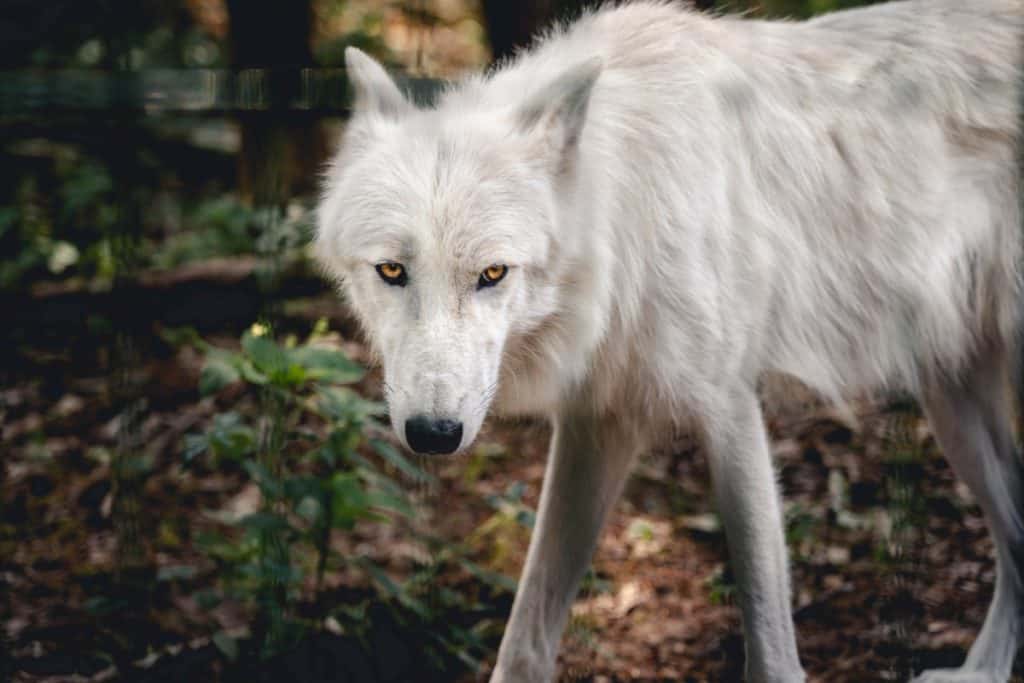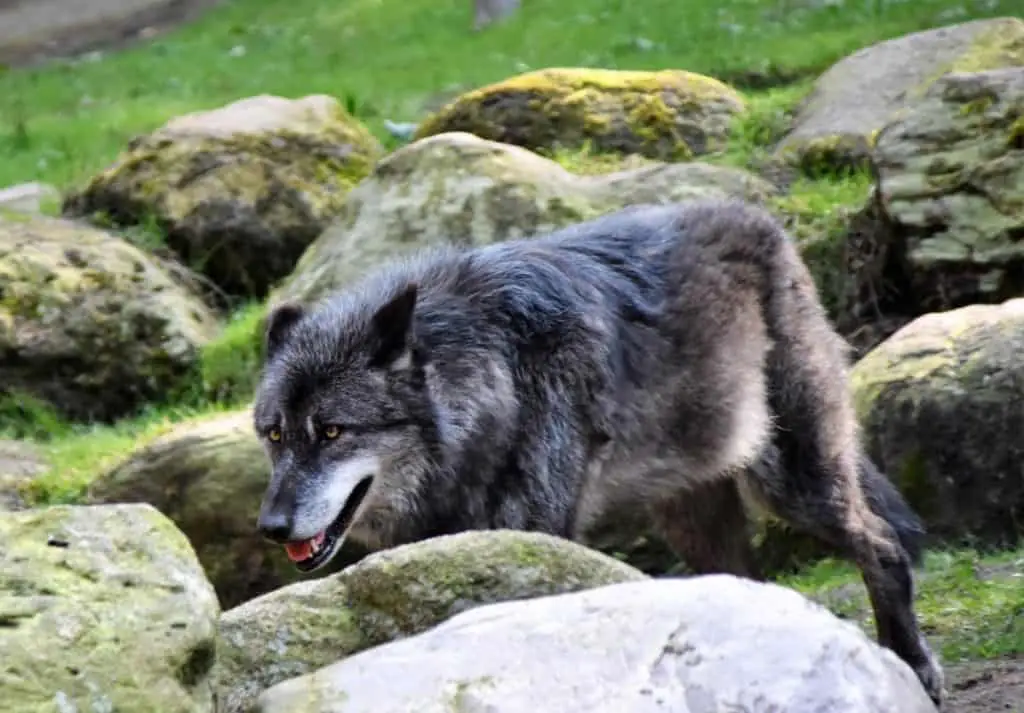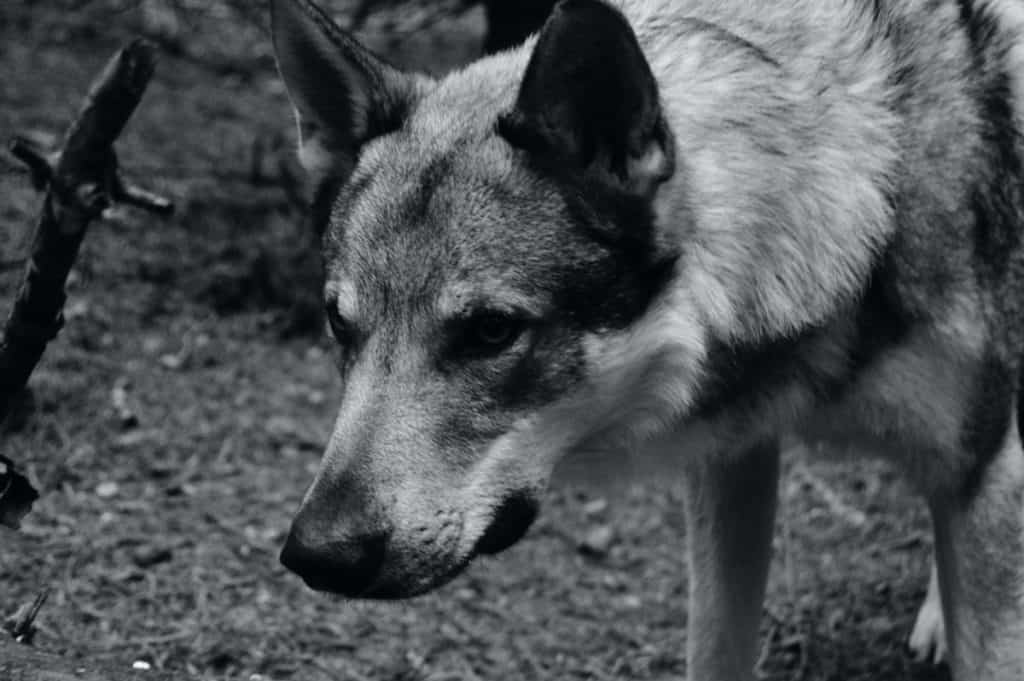
If you are interested in finding out whether a wolf is a producer, a consumer, or a decomposer then you’ve come to the right article.
As, in this article, you’ll find the exact answer to this question, and also after you’ve read the answer to the main question then I’ll cover the answers to a few more closely related questions as well to extend your knowledge further.
I hope you learn a lot from this article.
Is a Wolf A Producer, A Consumer, Or A Decomposer?
The wolf is a food chain consumer and an apex predator that hunts and eats other animals to survive.
Wolves cannot be producers because they do not produce their food as photo-autotrophs (plants) do.
And they cannot be decomposers because they do not feed from decomposing matter like fungi, worms, and bacteria.
Wolves are extremely proficient hunters with a diet that includes hares, rabbits, mice, and beavers as well as much bigger animals such as elk, bison, and moose.
These predators eat fish and even some plants on occasion (mainly berries) but their diet is mostly carnivorous.
Check out the video below if you want to see wolves eating salmon after chasing a bear away.
Is an Arctic Wolf A Producer, A Consumer, Or A Decomposer?
The Arctic Wolf also known as the Polar Wolf or White Wolf is a smaller subspecies of the Gray Wolf.
The Arctic Wolf is considered a food chain consumer because it accesses plant-based nutrients by eating other animals (primary, secondary and tertiary consumers).
In taxonomic food chains, a consumer is an animal that gets its food from its environment rather than producing it.
Arctic Wolves are not producers because they do not make food as plants do.
Nor are they decomposers because they do not feed from decomposing matter as bacteria do.
Their diet primarily consists of musk oxen, caribou, moose, and, on occasion, seals, and hares.
Is A Gray Wolf A Producer, A Consumer, Or A Decomposer?
The Gray Wolf, also known as the Timber Wolf, is an apex predator with extremely powerful jaws and the endurance to pursue prey at over 37 miles per hour.
It is categorized as a consumer in its food chain because it is a carnivorous animal that survives by eating other animals.
This is different from a plant-based producer (or photo-autotroph) which creates food via photosynthesis.
Gray Wolves do not produce food nor do they feed on decomposing matter.
They are unambiguous consumers.
Their natural diet consists of elk, deer, moose, caribou, and some smaller mammals such as beavers, mice, hares, and rabbits.
Is A Wolf A Primary Consumer?
Wolves are secondary and tertiary consumers.
While they have the speed and power to hunt and kill other meat-eaters (like, for example, foxes, and coyotes), wolves also consume a wide variety of herbivorous animals (primary consumers) such as elk, deer, bison, and caribou.
It isn’t completely wrong to describe wild wolves as primary consumers because a small proportion of their diet does consist of grasses and berries.
Like primary consumers, wolves consume some plants (producers).
But the difference between a wolf and a true primary consumer is that wolves cannot survive on plants and use them to supplement a largely carnivorous diet.

Is A Wolf An Apex Consumer?
Wolves are considered apex predators in most wild habitats.
It’s not uncommon for wolves to live in environments with no predation dangers because only a handful of other mammals are capable of hunting them for food.
If there are no native bears or tigers, wolves are at the top of the food chain and can be described as apex consumers.
The only dangers they face in this environment are interspecies predation (wolves killing wolves) and human hunters.
Wolves are not apex consumers in habitats with native tigers, grizzly bears, and polar bears although they remain extremely proficient hunters.
Those animals capable of preying on wild wolves are the apex consumers in this scenario.
Is A Wolf A Secondary Consumer?
A wolf can be considered a secondary consumer.
Though the term is typically used to describe omnivorous animals rather than high-level carnivores, it’s still technically accurate because wolves hunt a great number of herbivorous animal species (primary consumers).
When a wolf eats herbivorous mammals like elk, bison, deer, caribou, and moose (primary consumer), it is acting as a secondary consumer.
Check out the video below if you want to see wolves eat a deer.
Is A Wolf A Tertiary Consumer?
Wolves are tertiary consumers.
They are powerful hunters with the ability to hunt and kill other meat-eating mammals (like, for example, foxes, and coyotes).
Though a wolf’s diet is largely made up of herbivorous species (deer, elk, moose, caribou, and bison), it is close enough to the top of the food chain that it can take down almost any animal with just a few exceptions (like, for example, bears and tigers).
Is A Wolf A Quaternary Consumer?
It’s quite rare for wolves to be considered quaternary consumers because they have some natural enemies.
These wild hunters are extremely powerful but a few larger species (bears and tigers) can and do prey on wolves.
For this reason, it’s not usually accurate to call them quaternary consumers.
In a habitat containing grizzly bears and wolves, the grizzly bears would be the quaternary consumers because they hunt and eat the tertiary consumers (wolves).
And there is nothing higher on the food chain (besides, humans) that could prey on the grizzly bears.
It is, however, possible that a group of wolves could overpower a grizzly bear but even then it would be quite a challenge for the wolves to succeed.
Is A Wolf A Herbivore?
A wolf is never a herbivore whether it’s in the wild or captivity.
Wolves are ‘true’ (or obligate) carnivores which are highly efficient predators that need large amounts of animal protein to survive and thrive.
This is why they typically hunt large herbivores like caribou, deer, bison, and moose.
Wolves, like all carnivores, access their plant nutrients indirectly by consuming the bodies of plant eaters (primary consumers).

Is A Wolf A Carnivore?
A wolf is considered an obligate carnivore.
Like cats, wolves are known to eat some plant-based foods on occasion but they cannot survive on an exclusively vegetarian diet.
Wolves have high protein requirements and must hunt and kill other animals (primary and secondary consumers) to meet them.
They primarily eat deer, caribou, moose, bison, mice, rabbits, foxes, and hares.
Also, wild wolves are not just carnivores, they are among the most successful carnivores on the planet.
The only other hunters capable of killing wolves are, for example, bears, lions, and tigers.
Wolves that live in environments without any of these high-level quaternary consumers can be considered the apex predators in their habitat.
Is A Wolf An Omnivore?
Though wild wolves are known to eat grasses and berries on occasion, they are not usually considered omnivores.
The largest proportion of their diet consists of meat proteins from prey animals such as rabbits, moose, hares, elk, bison, caribou, mice, and sometimes foxes and coyotes.
While it’s not completely incorrect to say that wolves have an omnivorous diet, the amount of vegetation they consume is negligible compared to their meat consumption.
Wolves are considered obligate carnivores because they cannot survive without consuming other animals.

